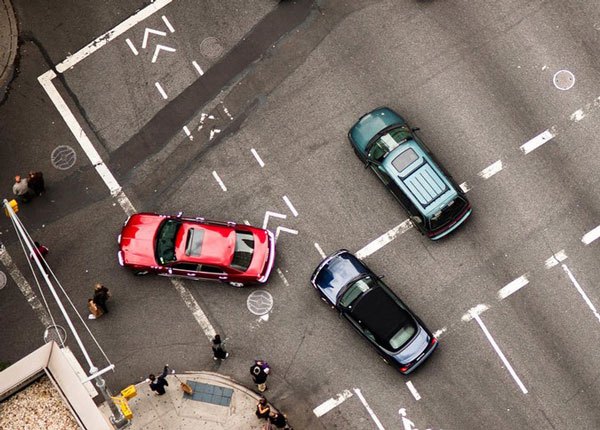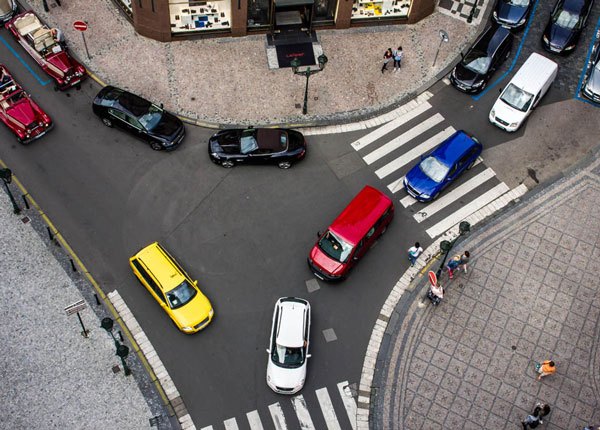
Merging With Traffic: Step-by-Step Instructions To Entering a Highway
Updated Oct. 30, 2020No matter how thoroughly you mentally prepare yourself for the challenge of driving on the highway, your very first time is going to be stressful. Knowing what you are doing on paper is not the same as being able to execute the advanced maneuvers needed during highway driving. Being around other motorists traveling at speed is intimidating but you will quickly adapt, with regular practice and guidance from your instructor. Let’s find out what you need to know about entering a highway and merging with other traffic safely.
Step-by-step instructions
While there are occasional exceptions, most highway entrances can be broken down into three key sections: the entrance ramp, the acceleration lane and the merging area.
Safe highway entry should be executed as follows:
- 1

When the entrance ramp is level with the highway and your view permits it, begin by checking for traffic while still on the ramp.
- 2

Activate your turn indicator to signal to other drivers that you will be merging into the acceleration lane.
- 3

Use the acceleration lane to increase your speed, to match that of the other drivers already on the highway.
- 4

Check for cars behind you using your side-view and rear-view mirrors, turning your head to check the vehicle’s blind spots.
- 5

Identify a gap in the traffic. The recommended gap is four seconds though you may need to work with a lesser gap in heavy traffic.
- 6

When you are certain it is safe, merge onto the highway.
Avoid driving in the wrong direction
The start of highway exit ramps will be marked with “DO NOT ENTER” and “WRONG WAY” signs. There may also be directional arrows painted on the roadway and other high-tech warning devices to prevent drivers from entering the highway in the wrong direction. Look out for these warning signs and make sure you are entering the freeway via the correct ramp.
Around the United States, motorists driving the wrong way are the cause of several hundred traffic deaths every year. This mistake is most often made by drunk drivers, though it can also be caused by distracted driving and driving in an unfamiliar area.
If you find you have entered the highway in the wrong direction, DO NOT slam on the brakes, turn around or attempt to reverse back along the ramp. Instead, remain calm and follow these steps:
- Switch on your hazard lights and low-beam headlights to warn oncoming traffic.
- Pull over to the side of the road as soon as possible.
- Contact emergency services to ask for guidance. It is likely a recovery vehicle will need to come and collect you.
Right-of-way rules
You must not merge if it interferes with the flow of traffic, as motorists already on the highway have right-of-way. Though, considerate drivers will often move over to an adjacent lane or slow their vehicles to allow you enough space to enter the highway. You must always yield the right-of-way to motorists already using the highway when entering the right-hand lane. When using a lane marked “WEAVE AREA”, you must also yield to drivers who are exiting the freeway.
Common mistakes
Being aware of the mistakes made by drivers entering a highway will help you to avoid making them yourself. Failing to indicate when merging, merging too soon and driving too slowly are among the most common errors.
- 1

Merging too soon.
Merging onto the highway near the start of the acceleration lane or through the gore area is illegal. It is unlikely you will be traveling fast enough to merge with traffic already on the highway safely, if you attempt to merge too early. Joining the highway too soon will also limit the time you have to check the traffic around you and ascertain that it is safe to merge. - 2

Entering too slowly.
New drivers often make this mistake by hesitating in the acceleration lane to look for a space, rather than focusing on increasing their speed. The slower you are traveling when merging with highway traffic, the bigger gap you merge into must be. Using the acceleration to bring your vehicle up to speed will ensure a safe and smooth entry. - 3

Stopping at the end of the acceleration lane.
Less experienced drivers may panic and stop at the end of the acceleration lane, if they feel they do not have space to merge. Short of crashing into other vehicles and causing a multiple-car collision, stopping at the end of the acceleration lane is the worst mistake you can make! This will force other drivers on the entrance ramp to slow down and may prevent them from merging with the highway traffic. It will also make it impossible for you to merge yourself, without an extremely large gap between vehicles.
Like all driving skills, entering the highway becomes easy with a little practice. Allow a qualified driving instructor to introduce you to highway driving, to ensure you can develop your skills safely.




